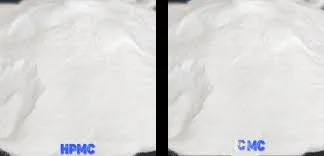
Nov . 23, 2024 01:11 Back to list
redispersible polymer powder types
Understanding Redispersible Polymer Powder Types
Redispersible Polymer Powders (RDPs) have become pivotal components in a variety of applications, particularly in construction, adhesives, paints, and coatings. These fine powders are typically derived from emulsion polymers, which, when dried, can be easily redispersed in water to form a stable polymer network. The versatility of such polymers lies in their ability to enhance the properties of various formulations, making them invaluable in numerous industries. In this article, we will explore the different types of redispersible polymer powders and their applications.
Types of Redispersible Polymer Powders
1. Acrylic-Based RDPs Acrylic RDPs are among the most common types utilized in the industry. Exhibiting excellent adhesion properties, flexibility, and resistance to UV radiation, these polymers are widely used in tile adhesives, external wall renders, and flooring products. The ability of acrylics to form a tough yet flexible film makes them ideal for applications where movement is expected, such as in flooring systems or facades.
2. Vinyl Acetate-Ethylene (VAE) Copolymer Powder VAE copolymers are known for their excellent adhesion qualities and balance of properties. They are particularly valued for their water resistance and paintability. Applications of VAE powders include interior and exterior wall paints, waterproofing solutions, and flexible adhesives. The combination of vinyl acetate and ethylene offers improved stability and performance in varying conditions, making VAE RDPs a popular choice in construction materials.
3. Styrene-Acrylic Copolymer Powders These RDPs are a hybrid of styrene and acrylic monomers, providing enhanced hardness and durability. They are often used in protective coatings, sealants, and adhesives where improved mechanical strength is required. The styrene component helps to improve water resistance and adhesion to various substrates, thus making them suitable for both indoor and outdoor applications.
4. Ethylene-Vinyl Acetate (EVA) Copolymer Powders EVA RDPs are recognized for their elasticity and toughness, making them ideal for applications requiring flexibility. They find significant use in adhesive formulations, especially in the automotive and packaging industries. Their ability to withstand temperature variations and flexibility aids in creating durable bonds in challenging environments.
5. Polyvinyl Acetate (PVA) Powders PVA RDPs are recognized for their excellent wetting and bonding properties. They are extensively used in woodworking glue, paper adhesives, and textile finishes. Their ability to enhance dry and wet adhesion makes PVA polymers suitable for various industries seeking reliable bonding solutions.
redispersible polymer powder types

Applications of Redispersible Polymer Powders
The applications of redispersible polymer powders span several industries, including
- Construction RDPs are fundamental in the production of tiling adhesives, mortar mixes, and external thermal insulation composite systems (ETICS). Their use improves the workability, adhesion, and longevity of construction materials. - Paints and Coatings In the paint industry, RDPs contribute to better dispersion, stability, and adhesion of pigments. They enhance mechanical properties and UV resistance, which are vital for exterior applications.
- Adhesives Whether in woodworking or packaging, redispersible polymer powders enrich adhesive formulations, improving strength and flexibility.
- Textiles RDPs are also used in the textile industry for coatings and finishes, offering enhanced characteristics such as water resistance and improved fabric handfeel.
Conclusion
Redispersible polymer powders play an essential role in various sectors, enhancing the performance and durability of products. The diverse types of RDPs available, including acrylics, VAE, styrene-acrylics, EVA, and PVA, offer tailored solutions for specific applications. As industries continue to evolve, the demand for innovative materials like redispersible polymer powders will only increase, ensuring their place as a cornerstone of modern formulations. Understanding the unique properties and applications of each type of RDP can significantly influence product performance and end-user satisfaction.
-
Versatile Hpmc Uses in Different Industries
NewsJun.19,2025
-
Redispersible Powder's Role in Enhancing Durability of Construction Products
NewsJun.19,2025
-
Hydroxyethyl Cellulose Applications Driving Green Industrial Processes
NewsJun.19,2025
-
Exploring Different Redispersible Polymer Powder
NewsJun.19,2025
-
Choosing the Right Mortar Bonding Agent
NewsJun.19,2025
-
Applications and Significance of China Hpmc in Modern Industries
NewsJun.19,2025







